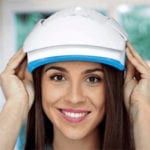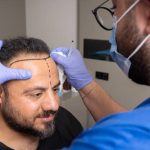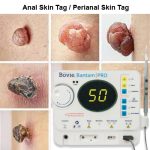March 28, 2023 By simonw Comments are Off
Table of Contents
Hair Transplant Toronto: The Solution to Hair Loss in the Greater Toronto Area
Alopecia can have an effect on the appearance and self-esteem of both men and women. Genetics, vitamin deficiencies, and underlying medical conditions can cause hair loss.
Toronto, Ontario, is home to several clinics that offer hair transplant surgeries using advanced techniques and the latest technologies to achieve the most natural-looking results. This article will discuss the benefits and what you can expect during the entire process.
What is a Hair Transplant?
A hair transplant is an in-clinic procedure that involves extracting hair follicles from the donor site. These follicles are transplanted into bald or thinning areas of the scalp. Follicular Unit Extraction (FUE) and Follicular Unit Transplantation are the two methods for removing individual hair follicles (FUT).
With FUT hair transplants, a strip of donor hair is divided into individual follicular units. During FUT hair transplants, a strip of hair from the donor area is cut into separate follicular units. Individual hair follicles are removed from the donor site using a micro-punch tool in the FUE procedure. After that, to promote the growth of new hair, the removed hair grafts are inserted into the recipient site.
Who is a Good Candidate?
For the transplant to be successful, sufficient donor hair must exist on the back of the head. The sides and back of the scalp of men with androgenic alopecia are covered with hair that normally doesn’t fall out. Additionally, candidates should consider whether or not they can return to employment with a full head of hair following surgery.
Cardiovascular disorders, hypertension, and other ailments can cause complications during the procedure. Also, persons with existing health conditions could make the healing process more difficult and should avoid it.
The Benefits
One of the main benefits of hair transplant surgery is that the outcomes look completely natural. Individual hair follicles are removed and transplanted during this specialized surgery to ensure that the transplanted hair resembles the original hair in terms of texture, thickness, and direction. In comparison to alternative treatments like drugs or hairpieces, it also provides long-lasting results, making it a more affordable choice over time.
The Process
Prior to the procedure, patients will have a consultation with a hair transplant surgeon to assess their condition and determine whether a hair transplant is appropriate. All aspects of the treatment will be discussed, including expected outcomes, the number of grafts required, and the cost.
Before the procedure, a local anesthetic is administered to the donor and recipient sites to make them as comfortable as feasible. The hair follicles will subsequently be removed from the donor area and placed in the recipient area by the physician. After a brief time of rehabilitation, patients can typically return to work in one or two days after the lengthy surgery.
Recovery Process
The patient may experience some swelling and discomfort following the surgery, although medications can be used to treat these symptoms. The transplanted hair typically falls out a few weeks after the procedure as a normal side effect of the healing process.
Types of Hair Transplants
Follicular Unit Transplantation (FUT) and Follicular Unit Extraction (FUE) are the two primary methods of hair transplantation. The primary contrast between the two techniques is how the hair grafts are extracted from the donor region. During the Follicular Unit Transplantation (FUT) procedure, a hair strip is taken from the donor area, and individual hair follicles are extracted from this strip. This method allows for removing more hair follicles in a single session, making it a suitable option for patients requiring many grafts. However, FUT can leave a linear scar at the donor site, which can be visible if the patient wears short hair.
Follicular Unit Extraction (FUE), on the other hand, entails taking individual hair follicles from the donor location using a micro-punch tool. Those with short hair find this method more appealing because it does not leave a linear scar. FUE is not recommended for patients who want a significant volume of grafts, however, as it can be more time-consuming and necessitates the extraction of hair follicles from a greater area.
Choosing a Clinic in Toronto
To get the best outcomes, the clinic you choose is essential. To guarantee the greatest safety and efficacy standards, it is crucial to select a clinic that uses cutting-edge equipment and methods. Also, the clinic ought to employ skilled surgeons with expertise in contemporary systems.
Potential Side Effects and Risks
Like any surgical procedure, hair restoration surgery has risks and potential adverse effects that should be considered. In both the donor and recipient areas, bruising, swelling, and numbness are frequent adverse effects. But, in exceedingly rare instances, people could encounter more severe issues like infection, bleeding, or scarring. It is important to have a full talk with your surgeon during your consultation in order to better understand these risks and ascertain whether you are an acceptable candidate for the procedure.
Non-Surgical Hair Loss Treatments
As effective as hair transplant surgery, there are non-surgical hair loss treatments as well. Finasteride and minoxidil are two common hair loss treatments. Platelet-rich plasma (PRP) is a non-invasive procedure that is becoming increasingly popular. A scalp injection of growth factor-rich plasma promotes the development of hair follicles. Scalp micropigmentation (SMP) is an additional popular choice that imitates the appearance of actual hair follicles by using a hair tattooing process.
The Bottom Line
Alopecia can be treated permanently and successfully with hair transplant surgery. The most realistic-looking outcomes can be given to patients using cutting-edge technology and sophisticated processes. The right surgeon and clinic must be chosen in order to get the best results.

TAKEAWAY
Even though alopecia can be demoralising and distressing, there are treatments like hair restoration. Hair transplant surgery, including Follicular Unit Extraction (FUE) and Follicular Unit Transplantation (FUT) techniques, is a highly specialized operation that can offer patients long-lasting advantages and outcomes that seem completely natural.
It’s crucial to pick a reputable facility with skilled surgeons that apply the most recent tools and methods for the greatest results. With the aid of the best facility and surgeon, patients can regain their confidence and hair, and they can benefit in the long run from having a full head of healthy hair. The recovery time following surgery is brief, and patients can resume their usual work schedules in a few days.
A natural hairline and even facial hair can be restored with hair restoration surgery. Depending on the procedure’s complexity and graft count, hair transplant surgery in Toronto, Ontario, varies in price. The average cost is nevertheless affordable compared to other comparable facilities in North America. Hair transplantation from different parts of the body to the head is an option available to patients.
Many men suffering from androgenetic alopecia frequently choose to undergo hair transplant surgery. The donor site can be anywhere on the body with existing hair, and the surgery can be done under local anesthesia. Also, it offers an enduring and efficient treatment for alopecia. For a recommendation for Toronto hair transplantation, get in touch with the Trichology Centre.
Q & A
What is a hair transplant?
Hair transplantation is a surgical technique that entails the relocation of hair follicles from donor sites, commonly located at the back or sides of the scalp, to areas experiencing hair thinning or baldness.
How does a hair transplant work?
During a hair transplant, hair follicles are extracted from the donor area and carefully transplanted into recipient sites on the scalp. The transplanted hair follicles continue to grow naturally in their new location.
What are the different techniques used in hair transplantation?
The two primary techniques used in hair transplantation are follicular unit transplantation (FUT) and follicular unit extraction (FUE). FUT involves removing a strip of scalp with hair follicles, while FUE involves individually extracting follicular units.
Is hair transplant a permanent solution for hair loss?
Yes, hair transplant is considered a permanent solution for hair loss because the transplanted hair follicles are typically resistant to the hormone responsible for causing hair loss (DHT). However, it is important to note that natural hair loss may continue in other areas of the scalp.
How long does it take to see the results of a hair transplant?
The transplanted hair follicles are typically shed within a few weeks after the procedure. New hair growth usually starts within a few months, and significant improvements can be seen within 6 to 12 months.
What factors determine the cost of a hair transplant in Canada?
In Canada, the cost of a hair transplant can differ due to multiple elements, including the level of hair loss, the chosen technique, the surgeon’s expertise and reputation, and the geographic proximity of the clinic.
Does insurance cover hair transplants in Canada?
In general, hair transplant procedures are considered elective and cosmetic, so they are not typically covered by health insurance in Canada. However, checking with your specific insurance provider for any potential coverage options is advisable.
How much does a hair transplant typically cost in Canada?
Depending on the factors mentioned earlier, the cost of a hair transplant in Canada can vary significantly, ranging from a few thousand dollars to tens of thousands of dollars. It may cost between $4,000 to $15,000 or more on average.
What are the risks and potential complications associated with a hair transplant?
Similar to all surgical procedures, a hair transplant entails potential risks and complications, including infection, bleeding, scarring, numbness, and irregular hair growth. However, these risks are relatively rare when performed by a skilled and experienced surgeon.
How can I choose a reputable hair transplant surgeon in Canada?
It is crucial to research and choose a board-certified plastic surgeon or dermatologist with extensive experience in performing hair transplant procedures. By perusing patient reviews, examining before-and-after photos, and arranging consultations, you can gather the necessary information to make a well-informed decision.
Is there a non-surgical alternative to hair transplantation?
Yes, there are non-surgical alternatives for hair loss, such as medications (e.g., minoxidil, finasteride) and low-level laser therapy (LLLT). These options may help slow down hair loss or promote hair growth in some individuals but may not provide the same results as a hair transplant.
Are there any age restrictions for undergoing a hair transplant?
While there is no rigid age restriction for a hair transplant, it is generally advisable for individuals aged 25 and above, when the pattern of hair loss tends to be more stable and predictable. However, individual factors and consultation with a qualified surgeon will determine eligibility.
How long does a hair transplant procedure typically take?
The time required for a hair transplant procedure can differ based on factors such as the size and complexity of the transplant as well as the chosen technique. Generally, it can take several hours, ranging from 4 to 8 hours or more.
Is there a recovery period after a hair transplant?
Yes, there is a recovery period following a hair transplant. Patients may experience swelling, redness, and mild discomfort in the treated areas. Most individuals can return to work and regular activities within a few days to a week, but full recovery may take several weeks.
Are the results of a hair transplant natural-looking?
When performed by an experienced surgeon, the results of a hair transplant can appear natural and blend seamlessly with the existing hair. The transplanted hair will grow and behave like the individual’s natural hair, providing a natural-looking outcome.
Hair Transplant Toronto Cost | Home | AWMC Map Tiles
Is Hair Transplantation Permissible in Islam?
The Bald Truth: Everything You Need to Know About Hair Restoration in 2021
Comments are closed.
















